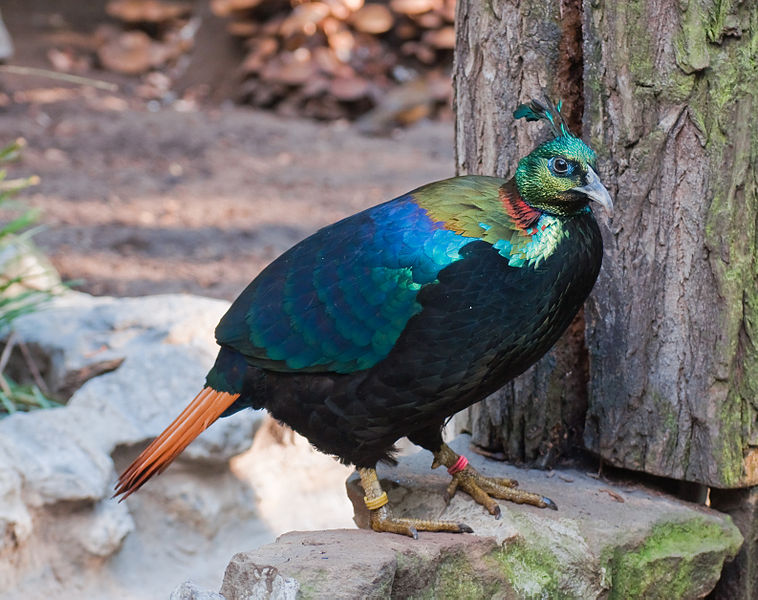The Great Indian Bustard (Ardeotis nigriceps) is the rarest of all bustard species found in the world. It is also the tallest. True to its name the bird is a majestic specimen among all birds, with a slender white neck and tall bare legs, sometimes reaching the height of over a metre. Sadly though, just 300 of these giant birds exist globally today. As the Indian government mulls over a species recovery programme to protect the bird, we find how nature and man-made torture are not making the task too easy.
The Great Indian Bustard is the State bird of Rajasthan. But recent events have pointed out how the state is hardly concerned about a bird that has been internationally recognised to be highly threatened.
The Daily Mail reports how at the Desert National Park of Rajasthan even some forest officers are turning a blind eye to the growing poaching activities. They are sometimes sheltering and protecting the poachers instead of the threatened birds.
In Andhra Pradesh on the other hand, while the government backed species recovery programme is a great initiative being planned to save the dying species, habitat loss and natural predators are some problems that have become mammoth road blocks.
Protectors turn Predators
On May 13 the son of a forest official was reportedly caught by local villagers at the Desert National park’s Sudasari range in Jaisalmer district hunting for the regal bird.
The report further adds how the authorities did not register any complaint against the man despite a directive from the chief minister’s office, following a written complaint from a local Pradhan, Laxmi Kanwar, on May 23.
The villagers infact have reported three incidents of poaching, including one on 20 December, 2012 and another on 25 March, 2013.
It is believed that the bird is hunted for its meat in the state. Being a grassland species, it is not a frequent flyer and the big built only makes it an easier target.
Rarer than the Tiger
There was a time in India when the Great Indian Bustard was being considered as the Indian National bird. In those days, it was easily found in almost the entire peninsular region of India. But even as the peacock was adorned with the coveted title, the bustard began to disappear, so much so that now only 300 of these birds are left in the world.
In India the bustard is found in Madhya Pradesh, Gujarat, Rajasthan, Karnataka, Andhra Pradesh and Maharashtra, but the sightings are very rare and few.
The International Union for Conservation of Nature (IUCN) has listed the bird as Critically Endangered. It is actually an even rarer species than the Indian tiger.
At the Desert National Park in Rajasthan, authorities have recorded about 100 individuals of the bird, though recent events of poaching may have reduced these numbers. Being a bird that prefers to live around tall grasses, the other major threat to its existence is the vanishing grasslands.
Assistant conservator of forest, Virendra Bissa, who is acting divisional forest officer of Desert national park, says that it could not be said for sure that the bustard that died recently was the victim of poaching. But post mortem report point otherwise, showing the bird to be injured by a sharp weapon.
Stray dogs too are a potential threat to the birds, as per the locals.
The Good News
Rajasthan’s apathy is at least not a trend followed by the rest of the country. The Ministry of Environment and Forest (MoEF) had declared a Species Recovery Program for the Great Indian Bustard in 2011 as reported by India’s Endangered.
With help from the Bombay Natural History Society (BNHS), World Wide Fund for Nature (WWF) and State Forest Departments under the programme the Rollapadu Great Indian Bustard Sanctuary in Kurnool district of Andhra Pradesh has now been selected as the site where revival of the dying bird species will be attempted. The project will continue for the coming ten years.
Rollapadu Great Indian Bird Sanctuary was set up in 1987 in an area of 6.14 square km near Nandikotkur in Kurnool district. Tragically, the bustard population of the sanctuary has depleted to just five.
Under the project the team of researchers, volunteers, and forest department officials will try to increase breeding of the birds, conserve the habitat and ensure that no external problems add to the challenges to the survival of the bird.
The bustard is known to feed on locusts, beetles, butterflies, snakes, scorpions, lizards, mustard, pulses like Bengalgram and groundnut seed. It spends most of the time on the ground and flies only when it intends to undertake long flights to migrate to other areas. A bird lays one or two eggs in a breeding season, which is the August-December period.
Challenges at the Sanctuary
Just like a camel needs its desert environment and a fish needs its aquatic environment, the Great Indian Bustard too needs grassland to survive. Burning entire patches of grasslands to convert to cropland might have been an easy thing to do for many locals settling in new areas, but the act has robbed the bustard of its home.

Farmers in Rollapadu recall how even a decade back they could see at least 40-50 bustards in an around the district. But as farming land need grew, the bustards vanished.
Some also believe that after construction of the Alaganur Balancing Reservoir close to the sanctuary the grassland habitat got converted into wetland, leading to complete habitat loss for the gigantic bird.
The blackbuck population of the sanctuary rose from 17 in 1982 to 1,000 now, proving detarrant to the birds. Number of wolves that relish GIB eggs and chicks have grown too.
There are hence a gamut of problems plaguing the survival of these birds in India and any recovery programme first needs to attend to these problems before directly trying to save the birds.
Known for its piercing call the Bustard is giving its last cry for help in India. If even now callous attitude, lack of systematic protection strategies and general ignorance continue to dominate the otherwise grand plans to save the bird, India will have a hard time explaining to the world the demise of this majestic species when it flies away, never to return.
More Related stories,
Young Naturlist Spots Great Indian Bustard in Karnataka
From Dogs to Humans, Problems Galore for the Great Indian Bustard
Poor Genetic Diversity spelling Doom for Great Indian Bustard










3 thoughts on “The Great Indian Bustard Challenge: Can India save the Bird?”